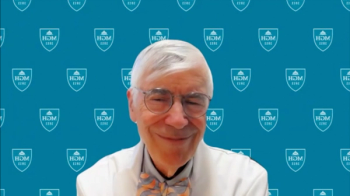
Community Health Worker Model Shows Positive Results for Outpatient Settings
Penn's innovative Community Health Worker model shows positive results in the outpatient settings for low-income individuals with chronic diseases.
Penn's innovative Community Health Worker (CHW) model has already proven its worth by reducing patient admissions and leading to better health outcomes for hospitalized patients.
For research purposes, the authors conducted qualitative in-depth interviews with 21 chronically ill, uninsured or Medicaid outpatients from low-income zip codes, and 30 members of their primary care practice staff. With the responses, the researchers created an outpatient manual to administer treatments outside of the hospital setting, hire additional staff, and work with primary care facilities in Philadelphia to implement the CHW model on their premises. The model is called the Individualized Management for Patient-Centered Targets, or simply IMPaCT.
The University of Pennsylvania Health System adopted IMPaCT as part of routine care for over 5000 patients. Recruitment, training, care, and integration systems within the program were established with input from hundreds of patient interviews to address challenges routinely faced.
“IMPaCT has been successfully used for several years throughout the Penn health system,” Shreya Kangovi, MD, MS, executive director of the Penn Center for Community Health Workers and the lead author of the study, said in a statement. “We’ve seen several positive results, including reduced readmission rates and better health outcomes. We wanted to introduce new patients who had not yet been hospitalized to the model, so our study is helping us adapt it to the outpatient setting.”
Under the IMPaCT approach, neighborhood residents are recruited and trained as community health workers. The workers join patients and their providers to set achievable health goals. They also help patients create tailored plans and support patients in achieving those goals. Activities could include exercising with patients at the local YMCA, helping to coordinate doctor's appointments, and providing emotional support through a difficult time. The CHWs link patients with a long-term source of support—like stable primary care or a support group—in order to maintain health gains and prevent future problems.
The model was altered slightly for the outpatient setting on the following themes:
- The patients were allowed to focus on one of their chronic conditions, rather than being overwhelmed by their multiple health conditions.
- In order to motivate for health behavior change, CHWs would help patients track progress toward their chronic disease management goals.
- Even though patients were already connected to primary care, they were given access to additional support by including a weekly clinic-based support group.
“Our findings are relevant to the growing interest in community health worker programs across the United States,” said Dr Grande, who is also a senior fellow in the Leonard Davis Institute of Health Economics at Penn. “But many payers and provider organizations are tempted to use a trial-and-error approach. This results in a lot of reinventing the wheel, which is costly, time-consuming, and leaves programs open to making common mistakes. Our study describes a way to balance fidelity and fit.”
Newsletter
Stay ahead of policy, cost, and value—subscribe to AJMC for expert insights at the intersection of clinical care and health economics.





























































